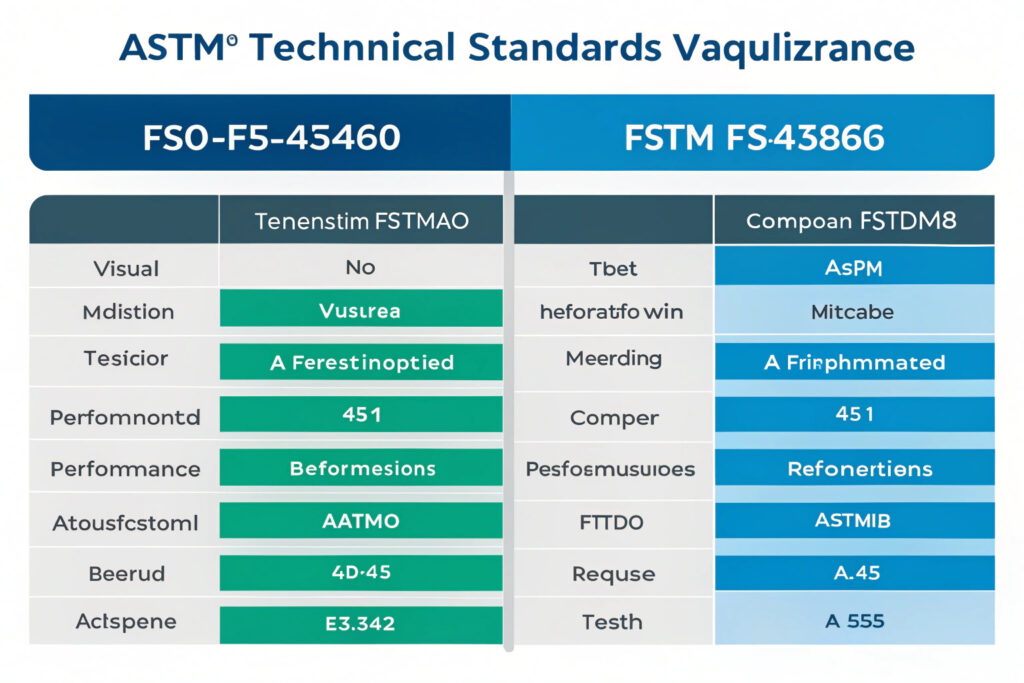Navigating the landscape of fabric mask standards can be confusing, especially when comparing major international frameworks like ASTM F3502 and EN 14683. Many manufacturers and brands struggle to understand which standard applies to their products and how compliance with each impacts market access and performance claims. Understanding these differences is crucial for proper product classification, accurate marketing, and regulatory compliance across different regions.
The key differences between ASTM F3502 and EN 14683 lie in their scope, testing methodologies, performance requirements, and intended applications—ASTM F3502 specifically addresses barrier face coverings for general public use, while EN 14683 applies to medical face masks primarily intended for healthcare settings. These differences reflect distinct regulatory philosophies and intended use cases that significantly impact design choices, testing approaches, and market positioning.
The distinction between these standards represents more than technical details—it reflects fundamental differences in how different markets approach respiratory protection for various user scenarios. Let's examine the specific differences that matter for fabric mask manufacturers and brands.
What Are the Fundamental Scope and Application Differences?
The most significant differences begin with the basic purpose and intended use of products falling under each standard.
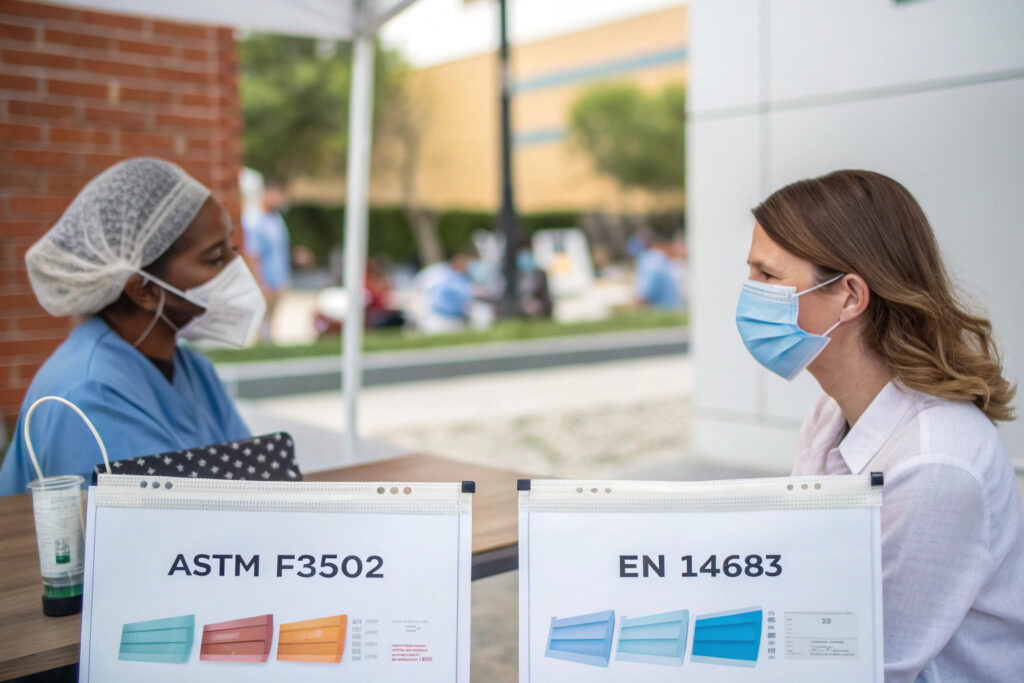
How does intended use differ between the standards?
ASTM F3502 specifically applies to "barrier face coverings" designed for source control and personal protection for the general public. These are intended for use by individuals in community settings to reduce transmission of respiratory droplets. In contrast, EN 14683 applies to "medical face masks" specifically intended for use in healthcare settings by patients, clinicians, and other medical personnel to protect against biological hazards during surgical procedures and medical treatments. This fundamental difference in intended use drives many of the subsequent technical variations.
What about regulatory status and compliance?
ASTM F3502 represents a voluntary standard developed through consensus by industry stakeholders, though it's increasingly referenced by retailers and regulators for general-purpose masks. EN 14683 is a harmonized European standard that provides presumption of conformity with the European Medical Devices Regulation (MDR) when masks are intended for medical purposes. This regulatory distinction means EN 14683 compliance involves more rigorous quality system requirements and regulatory oversight for manufacturers.
How Do Performance Testing Methods Differ?
The technical approaches to evaluating mask performance reveal significant philosophical differences between the standards.
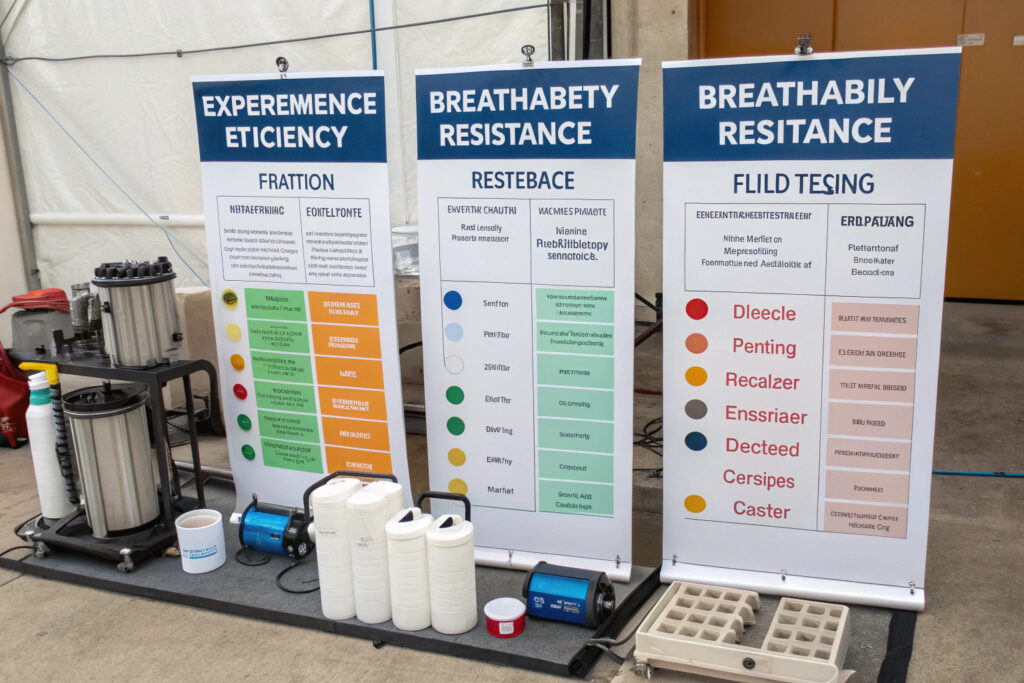
What are the filtration efficiency testing variations?
ASTM F3502 tests filtration efficiency using latex sphere particles sized 0.1-0.5 microns at a flow rate of 15 L/min (simulating light activity breathing), requiring ≥20% filtration for Level 1 and ≥50% for Level 2. EN 14683 uses bacteria-sized particles (approximately 3 microns) at higher flow rates (28.3 L/min for Type I, 95 L/min for Type II/IIR), requiring ≥95% bacterial filtration efficiency (BFE) for all types. This reflects the medical standard's focus on biological containment rather than general particulate filtration.
How does breathability assessment differ?
Breathability resistance in ASTM F3502 is measured as pressure differential (ΔP) in mm H₂O, with requirements of ≤15 for Level 1 and ≤10 for Level 2. EN 14683 also measures pressure differential but with different requirements: ≤4.0 for Type I and ≤5.0 for Type II/IIR. The significantly lower pressure differential requirements in the medical standard reflect the need for healthcare workers to wear masks for extended periods without fatigue, though the testing methodology differs enough that direct numerical comparison is misleading.
What Are the Material and Construction Requirement Variations?
The standards approach material specifications and construction requirements from different perspectives based on their intended use cases.
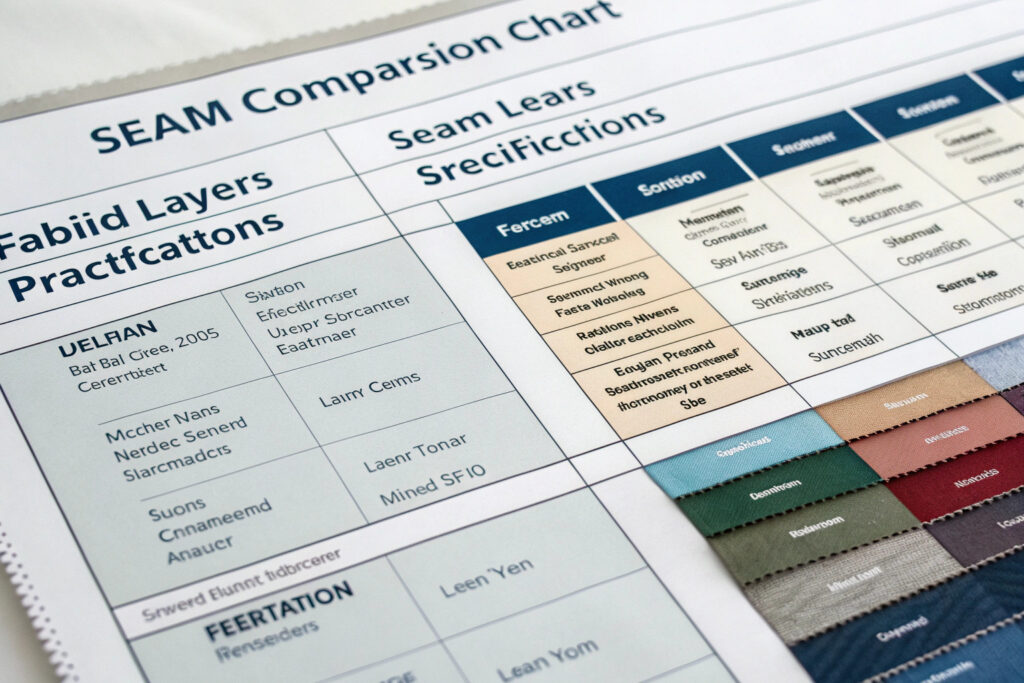
How do material requirements compare?
ASTM F3502 does not prescribe specific materials, allowing innovation in fabric choices while requiring they meet performance criteria for filtration and breathability. EN 14683 typically expects non-woven polypropylene materials commonly used in medical settings, though the standard itself focuses on performance rather than material prescription. This difference reflects the community versus medical use distinction, with ASTM allowing broader material innovation for comfort and fashion considerations.
What about splash resistance and fluid penetration?
A key distinction appears in fluid resistance requirements. ASTM F3502 has no fluid penetration resistance requirement, reflecting its community use orientation. EN 14683 Type IIR (the highest protection level) requires synthetic blood penetration testing to withstand 120 mmHg pressure, essential for protecting healthcare workers from blood and bodily fluid splashes during medical procedures. This represents one of the most significant practical differences for mask design and material selection.
How Do Labeling and Classification Systems Differ?
The way each standard categorizes performance levels and requires product labeling reflects their different approaches to communicating protection levels.
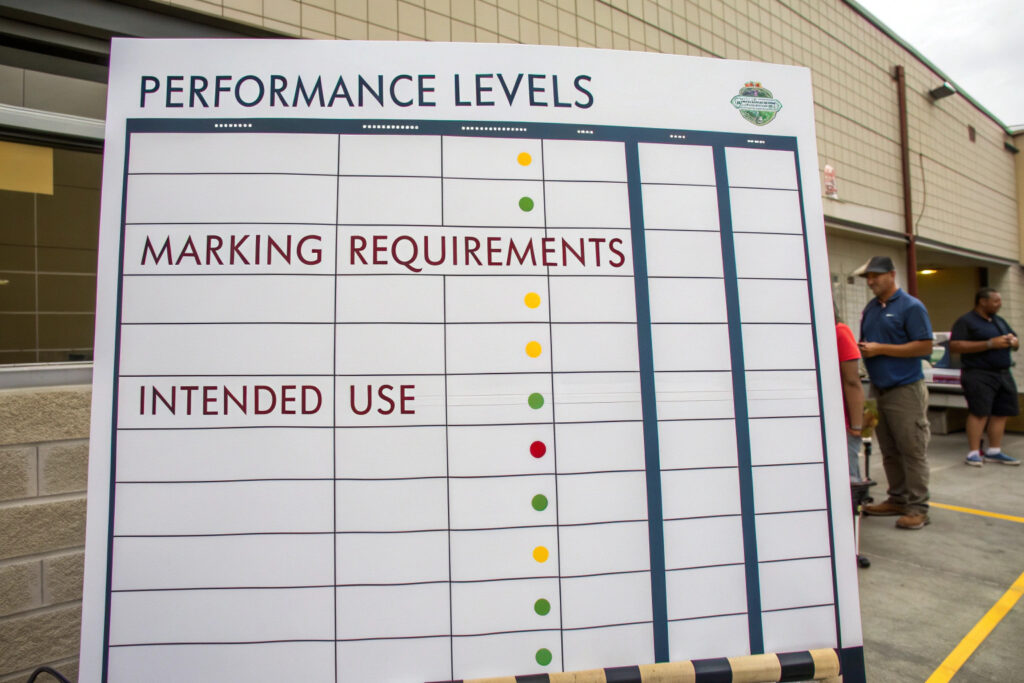
What are the classification level differences?
ASTM F3502 uses a simple two-level system (Level 1 and Level 2) based primarily on filtration efficiency and breathability. EN 14683 employs a more complex classification with Type I (primarily for patient use), Type II (for healthcare worker use), and Type IIR (with additional fluid resistance). The medical standard's more nuanced classification reflects the varied risk environments in healthcare settings compared to general community use.
How do labeling requirements compare?
ASTM F3502 requires specific labeling including performance level, cleaning instructions (if reusable), and a statement that the product is not a respirator or medical device. EN 14683 requires medical device labeling including CE marking, manufacturer information, lot numbers, and specific symbols indicating compliance with the medical devices directive. These labeling differences highlight the distinct regulatory contexts of each standard.
What Are the Implications for Manufacturers and Brands?
Understanding these differences has practical implications for product development, market positioning, and regulatory strategy.
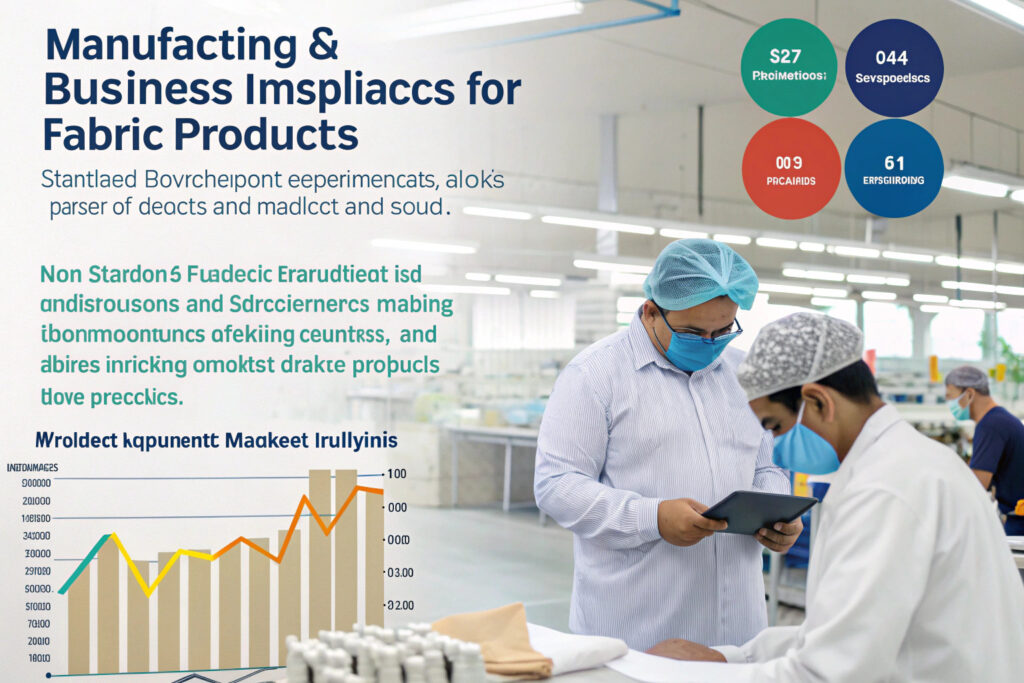
How does standard selection impact market access?
Choosing to certify to ASTM F3502 facilitates market entry in North America for general-purpose masks, while EN 14683 certification is essential for selling medical masks in European markets. Some manufacturers pursue both certifications for different product lines or different markets. The decision significantly impacts design choices, material selection, and manufacturing processes, with EN 14683 typically requiring more rigorous quality systems and documentation.
What about testing costs and timelines?
ASTM F3502 testing is generally less expensive and faster, with typical costs of $2,000-$4,000 and timelines of 2-4 weeks. EN 14683 testing involves more comprehensive evaluation, typically costing $5,000-$8,000 with timelines of 4-8 weeks, plus additional expenses for quality system implementation and regulatory submission. These differences reflect the more rigorous requirements for medical device certification versus general consumer products.
Conclusion
The differences between ASTM F3502 and EN 14683 reflect their distinct purposes: ASTM F3502 provides a framework for barrier face coverings for general public use, while EN 14683 establishes requirements for medical face masks used in healthcare settings. The key variations in testing methodologies, performance requirements, and regulatory status mean these standards serve different markets and applications. Understanding these differences is essential for proper product classification, accurate marketing claims, and compliance with regional regulations.
For fabric mask manufacturers, the choice between these standards should align with intended use, target markets, and business strategy rather than viewing one as inherently "better" than the other. Each serves important but different roles in the broader ecosystem of respiratory protection.
Need guidance on which standard applies to your fabric masks and how to achieve compliance? Contact our Business Director, Elaine, at elaine@fumaoclothing.com to discuss your specific products and markets. We'll help you navigate these standards to ensure your masks meet the appropriate requirements for your target customers and regions.

